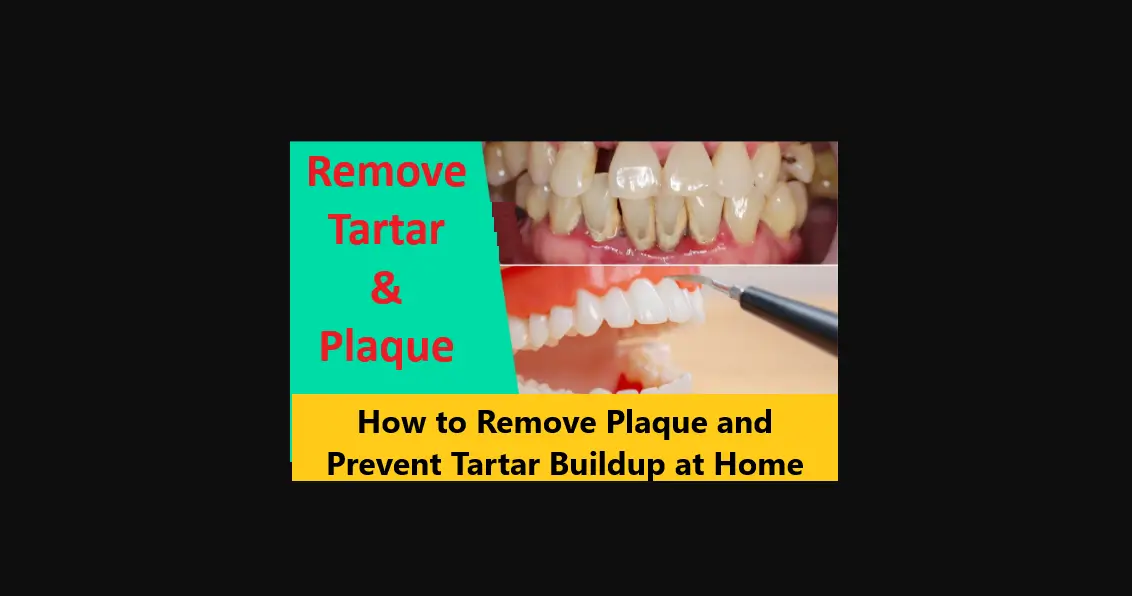How to Remove Plaque and Prevent Tartar Buildup at Home
Maintaining good oral hygiene is crucial for preventing plaque and tartar buildup, which can lead to various dental issues.
This comprehensive guide explains simple and effective methods to manage plaque and tartar at home.
Read More: Health Insurance Program Offers Free Treatment in Punjab
Understanding Plaque and Tartar
Plaque:
Plaque is a soft, sticky film that forms on teeth and along the gum line. It results from bacteria breaking down carbohydrates from food into acid, which mixes with leftover food particles and saliva.
Tartar:
If plaque is not removed, it hardens into tartar, a yellow-brown substance that can only be removed by a dental professional.
Tartar buildup can lead to gingivitis, an early form of gum disease, characterized by swollen and bleeding gums.
Effective Home Remedies for Plaque and Tartar
Brushing with Baking Soda
Why Baking Soda?
- Baking soda is mildly abrasive, making it effective at removing plaque without damaging tooth enamel.
- It helps balance the pH level in the mouth, preventing demineralization.
- Baking soda has antimicrobial properties that reduce harmful bacteria like Streptococcus mutans.
How to Use:
- Use a toothpaste containing baking soda.
- Brush teeth thoroughly with a soft-bristled toothbrush.
Research Support:
- A 2017 review found baking soda toothpaste more effective at reducing plaque than traditional toothpaste .
Oil Pulling with Coconut Oil
Benefits:
- Coconut oil has anti-inflammatory and antioxidant properties.
- Contains lauric acid, which has antimicrobial effects.
How to Practice:
- Place 1 tablespoon of warm coconut oil in your mouth.
- Swish for 5–10 minutes.
- Spit the oil into a trash can to avoid clogging pipes.
Research Support:
- A 2015 study found that oil pulling with coconut oil significantly reduced dental plaque and gingivitis symptoms .
Practicing Good Oral Hygiene
Daily Routine:
- Brush Twice Daily: Use fluoride toothpaste.
- Floss Once Daily: Remove food particles and plaque from between teeth.
- Rinse with Mouthwash: Use an over-the-counter mouthwash containing fluoride.
Additional Tips:
- Use a Water Flosser: Helps reach areas traditional floss may miss and massages gums.
- Electric Toothbrush: More effective at removing plaque and reducing gingivitis compared to manual toothbrushes .
Professional Dental Cleanings
Regular dental checkups and professional cleanings are essential for maintaining optimal oral health.
Why Visit the Dentist?
- Dentists can remove tartar buildup.
- They check for signs of tooth decay, gum disease, and oral cancer.
- Professional fluoride treatments help prevent tooth decay.
Preventing Plaque and Tartar
Dietary Adjustments:
- Reduce intake of sweets, starchy foods, and acidic beverages.
- Focus on a balanced diet rich in vitamins and minerals.
Additional Prevention Tips:
- Change toothbrushes regularly.
- Use dental sealants to protect against plaque buildup.
- Consider using prescription-strength mouthwash if recommended by a dentist.
For more detailed information, refer to reputable dental health sources such as the American Dental Association (ADA).
What are the differences between plaque and tartar?
Understanding the Sticky Situation in Your Mouth
Keeping your smile healthy goes beyond just aesthetics. It’s crucial for overall well-being, and a major factor in maintaining good oral health is understanding the difference between plaque and tartar. Both are enemies of a healthy mouth, but they differ in formation, removal, and impact. Let’s delve deeper and equip you with the knowledge to conquer these dental foes!
The Formation of Plaque: A Biofilm Battleground
Imagine a microscopic jungle on your teeth. Plaque is essentially a biofilm, a sticky colony of bacteria feasting on leftover food particles, especially sugars. There are over 700 species of these tiny organisms living in your mouth Trusted Source, some beneficial, but others detrimental.
These bacteria produce acids that attack tooth enamel, leading to cavities. Plaque itself feels slimy or fuzzy on your teeth and may appear white or yellowish. If left undisturbed, this biofilm becomes a breeding ground for trouble.
The Hardening of Plaque: The Rise of Tartar (Calculus)
Think of plaque as wet sand – easily brushed away. However, if neglected, plaque calcifies with minerals from saliva, hardening into tartar (also known as calculus). This transformation is like wet sand turning into immovable rock.
Tartar is much more difficult to remove and has a rough, brown or yellow appearance. It often forms near the gumline, creating a haven for further plaque buildup and increasing the risk of gum disease.
The Signs of Plaque and Tartar: Warning Signals from Your Mouth
Here’s how to identify plaque and tartar before they wreak havoc:
Plaque:
- Chronic bad breath: The bacteria in plaque produce unpleasant odors.
- Fuzzy or slimy teeth: Run your tongue across your teeth. A fuzzy feeling indicates plaque build-up.
- White or yellow goo on dental floss: This is plaque trapped between teeth.
- Bleeding or swollen gums: This signifies inflammation, potentially caused by plaque buildup.
Tartar:
- Discolored spots on teeth: Look for brown or yellow patches, especially near the gumline.
- Hard, rough patches on teeth: Tartar feels rough and gritty when touched.
- Swollen, painful, or bleeding gums: Persistent gum problems can be a sign of advanced tartar buildup.
The Battle Plan: How to Remove Plaque and Tartar
Plaque Removal:
Fortunately, plaque is your foe you can conquer daily. Here’s how:
- Brushing twice a day: Use a soft-bristled toothbrush and fluoride toothpaste to remove plaque from all tooth surfaces, especially the gumline.
- Flossing daily: Flossing removes plaque between teeth, where brushing can’t reach.
- Consider a fluoride treatment: A dentist can apply a high-concentration fluoride treatment for extra protection against plaque and tooth decay.
Tartar Removal:
Unfortunately, tartar requires professional intervention. A dentist can remove it through scaling and root planing procedures:
- Scaling: This procedure uses specialized tools to scrape away tartar above the gumline.
- Root planing: This smoothens rough tooth surfaces below the gumline, preventing further plaque buildup and promoting gum healing.
Maintaining the Victory:
Here are some tips to prevent plaque and tartar from regaining their hold:
- Regular dental checkups: Schedule regular cleanings for professional plaque and tartar removal.
- Diet control: Limit sugary and starchy foods, as these fuel plaque growth.
- Good oral hygiene habits: Consistent brushing and flossing are your best defense.
- Addressing risk factors: Smoking cessation, managing stress, and addressing any medical conditions like diabetes that contribute to gum disease are crucial.
Beyond the Smile: The Link Between Oral Health and Overall Health
Neglecting plaque and tartar can have consequences beyond a bad smile. Studies have shown a link between chronic gum disease (often caused by plaque and tartar buildup) and other health issues, including:
- Cardiovascular disease: Inflammation in the gums can contribute to inflammation in arteries, increasing the risk of heart attack or stroke.
- Diabetes: Gum disease can make it harder to control blood sugar levels.
- Respiratory infections: Poor oral health may increase the risk of pneumonia.
- Pregnancy complications: Gum disease might be linked to premature birth and low birth weight.
By maintaining good oral hygiene and managing plaque and tartar, you’re not just protecting your smile, but potentially safeguarding your overall health.
Conclusion:
Plaque and tartar are adversaries to a healthy mouth. Recognizing their differences and implementing effective removal strategies are key to maintaining optimal oral health. Remember, consistent brushing, flossing, and professional cleanings are your weapons
Preventing and managing plaque and tartar buildup at home involves a combination of good oral hygiene practices, dietary changes, and regular dental visits. By following these guidelines, you can maintain a healthy, plaque-free smile and avoid potential dental issues.
Note: The information above might not be accepted 100%. Please verify from your own sources. We will not be responsible for any kind of loss due to our content.
For more news, please visit Munafa Marketing.




